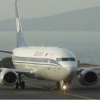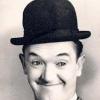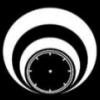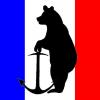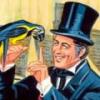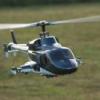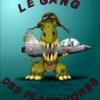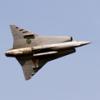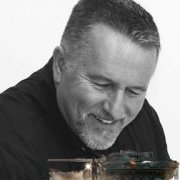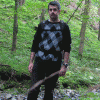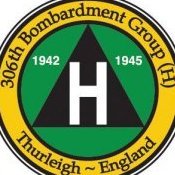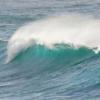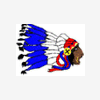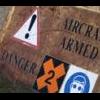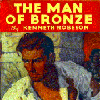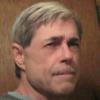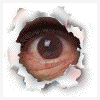Leaderboard
Popular Content
Showing content with the highest reputation on 22/03/15 in all areas
-
27 points
-
Tranx from WIP where it was posted in error! Hiya Folks, After a long interval I`m back onto Fleet Air Arm subject`s with this pair of Eduard 1/72nd scale Hellcat`s. First off; Hellcat Mk.I, FN430,6R, 1844 NAS, HMS Indomitable 1944. Hellcat Mk.II, JZ785, C3B, 800 NAS, HMS Emperor 1944-45; This Mk.II has been photographed with zero zero rocket mounting stubs fitted under the wings but I decided not to mount these, especially as these American rockets don`t appear to have been employed in action. Both models were hand brushed as usual,....the Mk.I using Aeromaster Dark Slate Grey and Sky with Humbrol enamel 123 EDSG and the Mk.II was painted using my cherished tin of Humbrol enamel 181 Glossy Sea Blue which I think is the best representation of this colour, especially when it is fresh and glossy! The decals for the Mk.I came from Techmod sheet 72035 while those for the Mk.II were a combination of the old Airfix kit and the spares box. Hope you like them, All the best Tony14 points
-
My newest project - MiG-29 9-12A, Polish Air Force, 22nd Air Force Base, Malbork This model has been built from MiG-29 9-12 Early Type kit, manufactured by Great Wall Hobby, aftermarket parts used:; - Eduard's BigEd for MiG-29 9-13 (BIG4995) - Master pitot tube (AM-48-060) - Eduard's resin exhaust nozzles for MiG-29 (648044) - Caracal Models' decals for polish MiG-29 bort number 56 (exploitation markings used only) (CD48030) - IPMS Świdnica White Eagle 41 ELT Malbork 1990-2013 decals (bort numbers) - Various parts from Eduard's MIG-29A an MiG-21MF kit to upgrade this model to the same version as the real aircraft. Painted with Gunze C series paints. Feel free to leave your comment. Sorry for any language mistakes. Greetings from Poland13 points
-
2013 I have been interested for captured French aircraft. With my frequent visits in foto area WWII in eBay I found the following photo as a template for my model. This template shows us three different camouflages / colors basic colors: french camouflage Vichy-markings and yellow tails Germans overpainted french marking on fuselage and wings with German markings I have used Tamiyas D.520 in scale 1/48. It is very simple to built and all part very good compatible. Within 8 houres you can built a basic model. More works you will have with airbrush painting. Here you see all works with help of my foto gallery: My template for my new model (for my old website) Cocpit details Vichy-Markings ready! Vichy- and French camouflage with German overpainted markings are ready all model part ready for marriage parts are "married" the basic area for my model ready D.520 is rady for take off:13 points
-
Hi, Next very archive model from my shelvs. I made it 37 or even 38 years ago. I am not sure about it when it was exactly, but it was during my last school days.... Now I just wash it from a gathered (despite beeing in close cabinet) dust and put new cover of Vallejo matt varnish, to refresh it a bit. I found her still sexy in this French Vichy pyjama The model is in markings of Aeronaval, Vichy AF in Marocco. Comments welcome Jerzy-Wojtek12 points
-
Tamiya 1/72nd scale Supermarine Spitfire Mk1. 610 Squadron. Painted with Xtracrylix, Gouache used for panel lines and elastane for aerial wires. Thank you for looking.11 points
-
Hi Everyone, thought I`d post some pic`s of my latest effort; My attempt at sticking together Kitty Hawk Models 1/48 `Twougar` Done as a TF-9J, FAC Cougar, of the H&MS-13, US Marines, based at Chu Lai, South Vietnam Built completely OOB with no additions what so ever Had a lot of problems getting the parts to stay stuck together on this one, as the plastic seems to only partially bond using normal cement and bits would seem to be stuck only to break off whilst handling it later on Still, I`m glad to have one in the collection ( though I`m expecting it to fall apart if someone slams a door or sneezes loudly ) Hope you enjoy it, thanks for looking Cheers Russ10 points
-
Hi everyone, This is my new model – little and yellow-wing Fairchild 24 in service with US Coast Guard where it was designated as J2K-2. In fact the kit allows to reproduce only Fairchild 24 as restored nowadays and painted in USGC colours. Original USCG’s J2K-2 had several variations not reproduced in the kit: different engine cowling, smaller tail, wider undercarriage struts (the pair that joins wheels and fuselage), rear windows were installed upside down. The kit by Legato is fairly good for a short-run. I assembled it almost OOB. Major scratchbuild being rotating propeller. Fit is reasonable with most difficulties around fitting transparencies – in particular front screen fit with awful gaps along almost all sides. Some sanding and extra stripes of plastic helped though. Another drawback of the kit was the decal sheet with some colours visibly out of register – black and light blue in my case. As a result USCG (and Israeli) insignia were unusable so I borrowed USCG insignia from another kit, but had to spray white and blue roundels as a background. Also decal representing stripes on the rudder did not perfectly match the rudder shape. I expected this and probably could better spray at least white and red stripes. According to historic photoes and USCG documents both “USCG” letterings have to be placed on the lower surfaces of the wing – not one on lower and one on upper sides as suggested by the instruction. So here are the pictures: And with another yellow-wing airplane in my collection - Lockheed Vega: Best regards! Dennis P.S. updated with flickr-hosted photoes10 points
-
Hi mates, I'm back among the living, and I've recovered enough from chemo blast number 5 that I've actually done some modelling. Woo hoo! Not a lot, mind you, but at least I'm out of bed. So, let's see, what have I done - painted the fuselage Gunze H315 Light Gull Gray and then touched up some between it and the white on the underside. The rudder was not white on the VF-302 Crusaders, so that saved me some masking. I then sprayed white on top of the engine tunnel. While I had the airbrush full of white, I also sprayed the wheels, stabilators, gear doors, some more landing gear parts - all that kind of stuff. Here is where she sits now: I'll probably do some weathering, but not a lot. I like my old fashioned colourful US Navy birds nice and clean. The Light Gull Gray didn't seem to get all splotchy and faded like the low visibility schemes of today. They must have switched to a low cost vendor of paint, and it doesn't hold up well. Probably Testors Acryl. For sure, I'll need to do a wash in the gear bays and the top of the engine tunnel. That's needed for proper shadowing, and will make the details pop out nicely. Next, I've got to mask the leading edges of the flying surfaces where the Corogard was applied. That's no fun, but it gotta be done. I think I'll wait until the end to do the natural metal around the exhaust, though. I plan on using a semi-gloss or satin clear, and would rather not spray that over the exhaust area. EDIT: This will come back to haunt me. The Quickboost flaps arrived, and they are much nicer than the ones I bought from Wolfpack. I'll end up using the droops (leading edge flaps) from Wolfpack, since they're double hinged as required for the F-8J, and the Quickboost flaps and ailerons. The Quickboost Martin Baker Mk. 7 bang seat arrived as well - very nicely detailed. I hope it fits! And I just may have a way of fixing that launch rail... Cheers, Bill PS. Blanik - thanks for the link on the Day Fighter proposal. I love that kind of stuff.10 points
-
Hi everyone, Here is what I have recently finished. A nice kit from Italeri, built almost straight from the box. In fact the only modification was the small air intake under the engine (I'm ashamed to confess I don't know what it is for) So, the kit was for a german night fighter while I wanted a Swedish J.11 and I found that the kit has different parts depending on the version it reperesents. Otherwise it was a simple project. And even though not everything went perfect with the wings I'm quite satisfied with it. Painted with vallejo acrylics and weathered slightly, I would say in a lazy manner with acrylic washes. Hope you like it9 points
-
This is the 1/48th scale Tamiya Vought F4U-1A Corsair. The markings are from Superscale Decals sheet number 48-501. 'Big Hog' VF17, USS Bunker Hill. Aeromaster paint was used for the main colours. After looking at photos of Corsairs coming into land, I changed the following:- I cut the main undercarriage into two sections, and rejoined them using a small diameter twist drill bit as an extension to represent the undercarriage hanging down. The hook was lowered. I cut the rudder from the fuselage, and reattached it slightly to the right which compensated for the engine torque during landings. The horizontal stabiliser was removed and reattached slightly up. I used lead foil to represent the pilots harness over his shoulders. The Eduard Corsair zoom set was used for the instrument panel, cockpit detail and some of the undercarriage detail. Lowered flaps option come with this kit, so I didn't need to touch these. The base is Perspex, painted black from underneath. I made this model when it was first released in 2000. I still don't know why I didn't do anything with the propeller. Maybe I should have waited for the motorised version that followed shortly after. Thank you for looking. Joe8 points
-
Thanks Stix - yes, some of your more recent output has got by with no glazing at all I assembled the rear fuselage and cleaned-up the join where I felt it necessary (i.e. where I had not paid sufficient attention to the join when glueing it): Then I assembled and sprayed the landing-gear bays and fittings: ... and the cockpit section: Once that was dry I joined the upper and lower wing sections: ... and once that was dry and cleaned up I added the nose and rear fuselage sections: suddenly it looks like a Blenheim: ... well okay, more like a Blenheim anyway Next job is adding the tailfeathers Cheers, Stew8 points
-
First build for some time so i hope it is up to Britmodeller standard. This is a Tamiya kit. Added various Mig products also added a few extra items such as drivers mirror and spare track holder and made a canvas cover out of tissue paper just to add something to the build. Enjoyed building again and hope to do some more. learning looking at some of the brilliant builds coming on this site. Colin.7 points
-
I built this some time ago as part of a diorama but decided on something else instead , this sat on a shelf half painted and I decided to go back to it and finish it off this week7 points
-
Before going any further I got some more use out of my test piece. Previous experience has shown me that Alclad is best left for as long as a week to fully harden up before masking on top of it. Thinking maybe a few hours would be enough I first tried household then Tamiya masking tape with fairly alarming results: Ah well maybe it sticks better to proper primer so I tried some Tamiya tape on the canopy masking just gently pressing it on: Right, that settles it, I'm not going anywhere near this with tape for at least a week. That leaves me slightly scratting around for things to do. I removed the masking from the U/C doors and was pleased to find it had all worked flawlessly: I put three or four coats of the liquid masking on the "hinges" as I have found thin, single coats can be impossible to remove. So all the little add on parts are finished apart from the guns and I am reluctant to remove them from the sprue until actually required: I might have to start something else. Bye for now, Nigel6 points
-
thank you chaps - you are very kind and I really appreciate your encouragement! ..so, on to whats been going on... ..I finished the side console by adding a handle for the emergency gear drop and the piping & valves to the fittings.. I made the handle end from tube & sprue to try and get the moulded rubber shape right.. ..also fitted the throttle quadrant and all the connector rods and added some placrd decals to finish up one of the sidewalls... ..needed to paint the rear bulkhead & seat so first shot some alclad.. ..lazily dinked some maskol about the place to allow for chipping the paint & shot some tamiya black (a mix of blacks actually..) and tried to give a battered look to the seat - this is a tired old firebomber so figured it would have seen quite a lot of abuse... ..working up to getting the cockpit parts into a workable group to slot in after I detail the fuselage exterior... ..and this is what it sorta looks like all together.. I still have to do lots more, but the key is does it fit, and can it be droppen in through the cockpit aperture.. ..it's like brain surgery and definately a bad way to do it, but so far I can egt it all in and out ok... ..so, I have some more to do to get the basics in here done, but actually the focus next is to get the fuselage ship-shape and then add all the panel lines & rivet detail - the airfame is split in the sense the nose half is all flush rivetted and the rear is dome rivetted like a battleship so will test me in getting it looking right.. ..I also got a very kinfd invitation from the Planes of Fame museum in Chino to crawl all over their F7F-3N when I am in LA next month - that has totally made my week! until next time.. TTFN Peter6 points
-
Hello Folks! Here's is my latest space project. I designed and built a 1:24 scale model of NASA/JPL moon space probe Ranger 8. In February, 1965, just fifty years ago NASA launched its eight (out of nine) spacecraft from the Ranger programme. The aim: after a direct trajectory journey Ranger was to crash on the Moon. Just before impact a set of six TV cameras was to take pictures of the Moon ground as far as possible and broadcast them to Earth. These pictures were needed to prepare for the following Surveyor landers and ultimately the Apollo manned programme. Only Ranger 7 to 9 succeeded. Ranger 8 crashed in the Sea of Tranquillity, not far from the Apollo landing site, four years later. I started my project after Telford 2012 and focused on a 1:24 scale kit with mixed media (resin, photo etching, turned brass) and full 3D CAD. Originally I started this project for my own use but Jacques Druel, the owner of l’Arsenal soon proposed his help and to decline this project into a kit on a limited run basis for 28 kits. This kit has been designed using CAD (Rhino 4, then 5) from the original NASA blueprints which are excellent. Following is a résumé of my project and build. A complete, more detailed version is available here (in French): http://www.forum-maquettes-spatiales.com/t1201-sonde-lunaire-ranger-8-prototypage-3d-1-24-montage-bgire#9986 Now let’s introduce the original, which spans 4.6m for a 3.6m height and weighted circa 370kg. I worked from the original NASA blueprints (sample here): For about 130 hours of CAD work I designed the probe: Drawing finished. Here are some renderings: Next step: preparing the parts for 3D prototyping (stereo-lithography) A few months later the beautifully printed parts arrive at last: Meanwhile I’d designed two PE sheets. One for improving the master parts, the other for using during the assembly. The first one: And the second one: From this point, l’Arsenal began producing a limited run of 30 kits with excellent quality, as always. Next came the first try for the PE sheet: By summer of 2014 I received the first batch of parts. About 1 500 parts to check and sort out... amongst them... my kit! An impression of the whole kit: Being involved into the project with a planned sale, I worked on the assembly instructions. I choose to have them in great detail burned on a CD which includes: - Assembly steps designed from my original 3D drawings. - Prototype assembly step by step pictures to help the builder. - A bunch of picture of the original probe, including Ranger 7 which can be seen in Washington Air & Space Museum. - Some NASA public domain footage of the original Ranger By that time (July of 2014) I found a solution to a recurrent challenge: how to render the parabolic shaped fine mesh of the high gain antenna? The solution came via an article in Airfix Magazine on a 1920’s era car build with details, including a front grid made of brass woven mesh. Eurêka! I ordered a 50TPI mesh from Eileen’s Emporium and this made my day. I ordered from Master of Poland a set of specially turned brass rods for the “base ring” braces. By January, 2015 I was ready to assemble the prototype. Here is a résumé of the assembly. I used the opportunity to correct and improve the assembly instructions. A sample from assembly instructions: Now the prototype assembly: The six TV cameras in place: Mid course correction engine with its tank and support: The same fitted inside main bus: Viewed from below. The engine with its protective cover: The twin platforms for attitude correction sub assembly (motor, tank and command electronics): The six main “legs”: Some painting work (gloss black under coat and aluminium Alclad2 finish): The completed payload. One can see the side cut for the six cameras block with a downward oblique orientation: The two solar panels: Fitting the ten brass braces. Each one has two resin plugs to fit into the legs: Attitude orientation plates fitted on the main bus: Various connectors are fitted to the base ring: Then comes the time for the very complex antenna driving gear. This includes thirteen tiny parts and is “functional”: the antenna can be rotated from folded to working position and the star tracker sun shield even rotates accordingly. Then came the first challenging step: antenna assembly. I confess I was rather afraid because of the thinness of parts. The step worked well: Second challenging step: fitting the formed woven mesh grid. I designed a two part forming jig which allowed to form each sector into a parabolic shape and determine their outline. Done at last! Last challenging step: assembling the four tiny tripods which hold the panels folded during launch phase. Each is composed of tubing bolted to special jigs. The original drawing was: Tripods were made each with three legs (9, 10 and 11.5mm, .4mm diameter brass rod). Resin parts involved were: I was worrying before but I soon realized the rods perfectly “clipped” into the microscopic resin parts. The tripod even stood “on their own” before bonding them with CA super fluid glue. Fitting the helium feed pipes to attitude control thrusters (.3mm brass rods clipped on resin parts) Fitting the six rest pads which hold the antenna folded during flight: And I’m done! Fifty years after the original mission, three years after I started my project. So let me introduce to you.... drum rolls... RANGER 8 Some further detailing to be done (various pipes and cables) This build spans 189mm and is 136mm high with antenna deployed. It includes 167 parts. Thank to Jacques Druel from l’Arsenal for helping, sustaining the project and endorsing the risks. _Bruno5 points
-
Here's what I'll be doing. An old Historex Imperial Guard officer. He's actually from the the Fusilier Grenadiers so he's in the shako not the bearskin. In the lovely little colour guide they include he's the little chap on his own in the background. Probably be a week or two before I get much done as I have a couple of things on the bench and I need to clear one to make room but thought I'd post this as a start. I have both volumes of the Osprey books that deal with the Imperial Guard on my iPad plus I took a lot of photos of various uniforms when I was last Les Invalides last year. Will have to spend a bit of time with the instructions and reference to work out which bits are used and what goes where! Allons-y!5 points
-
Dear Modelers, Revell Hunter is one of the best kit I have ever made. This was a Mk6, backdated as Mk51 for Danish Air Force. The only addition is a resin seat. Unfortunately it is out of production. I'm hoping Revell will be releasing this beautiful kit sometime in our near future. I also like to thank dear modeler friend Ole Rossel, for providing detail information and help on this project. Decals are custom made. Best Omer Erkmen5 points
-
Hi, She has been built for the Sea King Group Build The WIP is HERE if you are interested Hope you like her Cheers5 points
-
I have just completed a build of a completely...well almost unknown and unusual, Luftwaffe bomber that I thought I'd like to share. I have placed a link to the full story of what I have found of this amazing aircraft plus some further photos of my beast. I have to admit that it may not be 100% accurate as there are no details available on the He-177Z A6/R3’s that I have been able to find. Opps forgot these photos; Heinkel He-177Z A6/R5 This is the start of the brief story of this unusual and amazing bomber, as it full story was just a bit too big for this thread. I hope you enjoy, it was an amazing and rewarding build. "Of all the Heinkel bombers produced during the Second World War the least documented and most unusual was the little known He-177Z* “Zwilling” project, born out of time where desperate measures were being looked at to help stem the growing flow for Allied conveys coming across the Atlantic. From which produced Ernest Heinkel an ultra long range aircraft of unrivalled abilities. Which if delays, shortages in strategic materials and political interference had not occurred, may have had a dramatic effect in the supply of materials to the UK? *occasionally referred to in some text as the He-377, recovered documentation shows this designation was never used for this aircraft and was reserved for a project that never left the drawing board" And yes that is a Rheinmetall BK 5 auto cannon in the starboard nose, that actual fitment of guided weapons cannot be confirmed but they included: Henschel Hs-293's Henschel Hs-295's Henschel GT-1200A LT 950 T Glider Torpedo Ruhrstahl X-4 Air to Air missiles (though fitment of these was/is debated)5 points
-
Here is a small update before lunch time. I finished masking the doors and thought I would try using Maskol to create some chipping effects. Its a technique I have not tried before so I made a test piece: I gave my little aircraft an overall coat of Airframe Aluminium: This is how the test piece came out: I thought it worked quite well, I just have to get the level of the effect right. I'm now going to let the Alclad harden up and have a think before proceeding with anything else. Bye for now, Nigel5 points
-
Now.... where were we.... Ah right... masking and paint... Doing the frames by hand means you get the mask them in one, once they are attached... Vallejo Primer in lovely German Hell-Grün as a base coat. I ran out of black... And I decided to try something new. No pre-shading, but pre-brightening. With silver... And then a misting of Nato Black and normal Black. And once you go black... uhm... never mind... More sooooon! Rob5 points
-
here is my ROKAF F-15K, fun to ride other than upon paste the CFT. I did not too old for Korean maintain them well. Since my last Phantom is in flight .... See you soon .. didier4 points
-
OK, I'm calling this one done. Back in February I posted pics of my Tamiya Spitfire Mk.Vb (link), and now I've finished off it's Airfix sibling. Whereas the Tamiya kit was basically OOB with a few minor shape corrections, this one has a few additions to it (but no shape corrections): - Master brass cannon barrels - Wing trailing edges thinned and surface detail added to ailerons - Sutton harness from Tamiya tape - Added missing fasteners on the engine cowls - Added wing root fillet fastener detail - Prop, spinner and main wheels from the old Hasegawa Mk.Vb - Tail wheel from the Hasegawa Mk.IXc - Kit exhausts drilled out and detailed with weld seams - Main markings/insignia painted with home-made masks - Barracudacals airframe stencils - Added the sliding hood knockout panel cut from an old "Fast Frames" sheet Questions and constructive criticism are always welcome! The markings I chose are for a 402 Sqdn (RCAF) aircraft flown by Flight Lieutenant Henry Percy Duval of Saint-Jean-sur-Richelieu, Quebec. F/Lt. Percy was shot down near Dunkirk in late May 1940 during the Battle of France and managed to return to fight in the Battle of Britain. Later, on 27 April 1942, he was flying AA834 on a "Rodeo" to Lille and collided with another Spitfire over Le Touquet and was KIA. F/Lt. Percy was not famous, nor was he an ace, but to me he is representative of the thousands of airmen who gave their lives. Cheers, Tony4 points
-
Finally, I have managed to finish this project that I started almost three years ago. For years I have wanted to build one of the last Drakens in Swedish service, especially those which were not painted grey but kept the old blue/olive drab camouflage even after the J modification - apart from the nose and exhaust cone that were re-painted. In fact, this individual, 10-52, was the last camouflaged Draken to fly. I have used Aires cockpit and wheel bay set, Aires exhaust and plenty of photo-etch from Eduard, including the ladder. Plus pitot tube from Master and some scratched details. WIP thread here. Weathering was made with lots of techniques; Salt, multiple layer painting in slightly different colours followed by sanding, pre- and post-shading, dry pastels and dry-brushing. The decals are a mix from Hasegawas, Flying Colors' roundels, RBD Decals, Eurodecals and my spares box. I have tons of Draken decals... You might think that it is over-weathered. It is not. These were really weathered and dirty, especially the underside. Thanks for watching!4 points
-
The Dassault Rafale (French pronunciation: [ʁafal], squall)[5] is a French twin-engine, canard delta-wing, multirole fighter aircraft designed and built by Dassault Aviation. Equipped with a wide range of weapons, the Rafale is intended to perform air supremacy, interdiction, aerial reconnaissance, and nuclear strike missions. This is the first Revell kit I have built, and i have to say I was pretty impressed, nice detail all over, fit was really good, and plenty of armament options, the only aftermarket was the Wolfpack ejector seats which are amazing, ohh and plenty of patience, if we can call patience aftermarket, the tiger scheme is all hand painted,as there are no decals for this in 1/48, it was challenging and I stripped it completely down twice as I wasn't happy with the first results, any way enjoy. Tamiya paints and AKA used and I used 3 airbrushes Harder & steenbeck infinity and the evolution and my trusted Neo for Iwata TRN2 side feed pistol trigger airbrush for the main flood colours4 points
-
Hi, This is the 1/48 AM kit, slightly modified to show a RNZAF SBD-5 as used in Bougainville in 1944. Mods include, extend dive flaps, new tail wheel (these planes were land based), new exhaust and lights. I decided to close those beautiful red dive flaps, as that's how my references show them when parked, regret that now. Not much weathering as these planes were not used for long.4 points
-
Hello modellers, Some time has passed since my last post, but now I´m back to present the third part of my Korean War trilogy. Today a pair of Italeri F-51D Mustangs that I built last summer as companions for the Sabre and MiG 15. The Mustang served in the Korean War as a fighter-bomber as it was available in large numbers in the theater, but is said that it suffered the highest loss rates of all aircraft in the combat zone because of it´s cooling system very vulnerable to ground fire. Had the kits in the stash since 1997 and know that there are better Mustang models on the market meanwhile. I liked the fact that the Italeri kit allowed the built of a post second World war F-51 from the box with underwing rockets and colorful decals which BTW worked very good . Except for the Airfix pilot, the models are made from the box but with some modifications. As I like warbirds with easily turning props, assembled the complete engine section, then afterwards, drilled small holes to allow the attachment of the prop as last part of final assembly. It rotates on a small nail as axle under the spinner. The installation of the wire antennas from stretched sprue turned out to be a little bit complicated as a very well positioned hole had to be drilled into the canopy. Paints used were Revell and Humbrol enamels, the NMF was archieved with decanted Dupli color silver chrome and misty coats of Humbrol polished aluminium. My references consisted as always of some issues of Aircraft magazines and Squadron Signal books dealing with the Mustang and the Korean Conflict. Hope you like the duo Mario4 points
-
4 points
-
Hello all, Here I have my Mk. IV Tadpole from Takom. I must admit I think I stretched myself on this one! As I am only fifteen I am still just getting my bearing's here and I thought I'd try myself with something different as building 80's Tamiya stuff was getting a bit boring! This thing was a major wake up call for me and got me taking new approaches everywhere. The build of the main hull was tricky to begin with as I had to try and get the shape right for the vehicle. I managed to do it mostly well but it was going to be a long wait to see if I had it correct as final assembly of all sub-assemblies was a final step. The rhombus shaped thingies (I still haven't found out a name for them!) that carry the track round were easier to build but they still required a lot of time as they all had an intricate wall system on the inside. This lead to the wheels which were mind boggling but by the time I got to the second 'rhombus shaped thingy' I was alright. The sponsons were almost a no brainer but it did seem a shame to hide away all of the interior detail, which is very good when it fitted together! The tracks were also very simple as Takom, bless them, didn't have the heart to give the tadpole with it's extended track length those 5 piece per link track sets that I've heard about and instead gave a small package of clip together track which was basically like a complex form of Lego. Painting was a different approach as I was trying to make the tadpole section look newer than the rest of the tank. To simulate this I painted it with a mixture of Tamiya olive drab and Tamiya dark green which gave the tadpole section a nice drab green colour. The main hull however was painted in a mixture of Tamiya tan deck and earth (or something approximate to that, I can't quite remember which). I painted on the white and red identification stripes with Humbrol Enamel white and Vallejo Acrylic red. For weathering (for now of which you can't pick the model up without looking like you've spent the week in Flanders) I started by just pasting on a very thin wash of AK Interactive's dirt and dust wash followed by a very in-depth pin wash with Humbrol black Enamel Wash around all of the rivets which gave me double vision by the end of the day. I used a mixture of rust colours and washes to get the exhaust effect, which I'm still not happy with and may have to alter at a later date - along with the massive thumb print down the side and various block pieces of weathering pigment . For the track, over a coat of black I pasted on the same dirt wash and then fitted them. I then mat coated the whole model and went mad with pigments. I mixed up a bunch of various pigments with again the said wash to achieve a semi wet look gunk which was plastered all over the track and the parts where the track and tank met. Later I scraped off the tips of the track and went over them in pencil to give highlights. Tanks for looking, this model was really just an experiment for a fifteen year old with too many weathering products! I reckon it came out reasonably well, but I have some new ideas for next time. again, thanks for looking and enjoy the photos. Just adding on, to further the effect of the Frankenstein look, I roughly painted on a serial number as the original was usually painted on the part that was taken off to replace with the tadpole section P.S. for anyone looking to get this, I would highly recommend it!4 points
-
I'm calling this done: Macro lenses SO unkind and the iPhone's not the best camera for work like this (excuses, excuses). Technique summary: - paint the back of the film white - paint the PE black (or whatever) and 'weather' - Jon's paint pens used here, silver pencil brushed across for chipping, black and grey for 'shading' (you need to see Jon's, mine is rubbish) - my red Faber paint pen used to colour some (probably inappropriate) dials and lights - let it all dry and while you're waiting make sure the plastic is ready to receive it (smooth) - coat the front of the film in gloss varnish and position the PE over the top carefully, aligning the dials from all angles (thanks Sten) - leave to dry, pat (yourself) on back. - stick the PE/film to the plastic with CA (mind your fingers) My job for today is to dry fit and make sense of this before painting: The cutaway is from the BM thread mentioned above, not from the kit instructions (hurdy seatie gludy floory) which are useless. I'll also be using the pictures of the (sob sob) wrecked Brigand, being aware that this model is a B Mk 1 and there are lots of Ts out there. With different seats, maybe. Repeat after me: "Out of the box, out of the box..."4 points
-
That'll be these 'fins' then 12Jag, see how Hasegawa kindly moulded them to the rudder rather than make a separate piece that could be cut back to the right place You can see how far across the rudder they came oops I've found some sparse detail of the 'behind the front seat' area, there's a wall with a sort of box area in front of it Some of The aircraft bits and bobs sit here, including the complicated struts that allow the canopy to lift. This system is slightly different to the one the rear/main canopy has but there looks like a smaller version of the bellcrank 'looking' raising method that drives larger struts I think it will look busy enough, I wont be pumping air through the canopy demist/deice system though, just showing the pipe and hoses for the same I had some offcuts of polycard so I made a box... I quite like it and although it ain't no Lego dude, it has a similar job to do I fills it wiv plasticene, well OK only half fills it then after flattening the layer I popped some bits of plastic onto the plasticene I am doing this to learn how to use silicone moulding rubber, I plan to make copies of this randomly slected old bit of a kit sprue Just to see if I can actually make a two part mould Now this was yesterday and after I got as many bubbles as possible from the rubber I left it impatiently to cure over night I ran my knife round the edge of the mould down into the plasticene all round When I cut it out I also cut a chamfer on each face so there'd be nothing acting against the mould to distort it later Then I levered the rubber mould out of its cosy little box like so! Doh look Air bubbles on some of the bits of mould, but not too many The mould was inverted and put back into the little cosy box and the plastic sprue was reinserted Now when I work out what I can use to give a releasing layer onto the rubber I can make another 31 mg of rubber mix and see if they can be separated I have also been working the transparencies, here's the centre arch of the canopy being readied for its starring role with the front canopy struts I think there is a blast window in front of the HUD, I can even see the reflection of the lifter struts on one of my collection of T bird photos so I am fairly confident of that, so I have fitted it in, glued with Klear and after that set ai used a trace of canopy glue up where it wont be visible when the inner frame arch is painted in I'm going to be making the mirrors and handles for three more canopies following my satisfactory cobbling together of some for the GR1, tomorrow I hope Then get the struts ready too Paint, I want paint4 points
-
Right back at the wheel! Combination of work and a total inability to solder have kept me away. Progress has been made . . . I finally decided I couldn't live with the supports for the 20mm steps so of the came Which gave me chance to play with my new gadet, a modified toothbrush The first tube was epoxied to the brush head and I can now slip different size/grits into it. Very effective it was, so well pleased. Finally managed to solder up the bandstand with 0.5mm brass wire. For some reason the solder was reluctant to adhere to the annealed top rail. Overcame this problem by using Bakers Fluid Flux with Carrs self clean paste and holding the whole thing upside down whilst soldering. Result and with one of the ready use lockers Thanks for stopping by Kev4 points
-
Hi, The RT-2PM Topol, NATO reporting name SS-25 Sickle is a mobile intercontinental ballistic missile. This very unique vehicle has been designed in the Soviet Union at the end of 70’s. And it entered in service in the middle of 80’s. Throughout this time work continued on improving the battle management system. And Topol is still in service with Russia's Strategic Missile Troops. It a very good kit from Zvezda. With a lot of details (309 parts), the kit is easy to build and very well engineered. It’s a pleasure to just cut an glue together all the parts and everything fit well. The molding is perfect as well. Two options are present with all the parts for it : for transport and for launching. The instructions are long and divided in 18 steps. Be careful to follow it. Building this kit was very fun. I generally build planes and it was my first really military kit, even if it is a ground to air attack system (ground-to-ground…). I should have done better build in particular some joints, and in particular the long missile joint which it is the maybe worst point of this kit. I had fun to paint and to weather this kit. I wanted to test some new techniques of weathering. Military kits offer better options and some new techniques of weathering. It was pleasant to use Mig Ammo products and their tutorials on Youtube. Painting was a pleasant moment for me. And weathering too. You can see all the building there (only in french). I hope you will like the final result. I will do some more ground-to-air military kit. But not immediately. For now, I will come back to my planes and UAV ! I hope you will like it. Alain.3 points
-
As promised I'll be building this : bought for €12.50 on a well known online auction site. Here are the sprue photos : Nice three coloured plastic reminiscent of the Matchbox kits of my youth. Bizarrely the box claims it has approximately 110 parts - do they ship some out with missing parts or couldn't they be bothered to count them? Mine came with the bags still sealed so I'm optimistic I should warn you that this is my first GB and first public build thread - I don't expect to be able to compete with the standards of the other builds but as it's not the most common of kits hopefully it will be of interest anyway. I'm also a fairly slow builder, usually spending half an hour or so each evening and maybe an hour or two at weekends, so this is likely to take me a couple of months. Comments and advice are welcome - hopefully I can learn from the experience.3 points
-
Hello All, A rather belated start to this build. I've just made a space on my bench by finishing a Gladiator, so next up is the Short Skyvan of the Nepal Air Force. It's a small country, far away. The Airfix Short Skyvan kit was released in 1975 and is a nicely detailed model, with options for Olympic airways or the Oman Air Force, offering two interior fit outs. I will be going with the military fit out with canvas benches rather than the quite luxurious-looking Olympic cabin. I have a couple of pictures from the Internet of the aircraft in question and I know next to nothing about either the Skyvan or the Nepalese Air Force. I will endeavour to keep it that way, and any deviation from OOB will be brief and speculative! Sprue shots to follow when I get to a device that does photobucket! Thanks for looking, Adrian3 points
-
Following on from my Dallachy beaufighter I have made this Hasegawa Spitfire v b representing No. 401 Sqd RCAF during 1943.Corps of imperial frontiersmen. This build is part of my local modelling club (Aberdeen Modellers society)group build in memory of one of our past members and prolific builder John Milne, The task for us is to build one of Johns unbuilt kits from his not too small a stash and display them at the club open day in September or earlier at shows if possible. To that end I hope to have this at Perth show on the club stand in April So without further ado All comments and criticism welcome Ahh looking at the photos I may have the prop blades wrong but unsure!3 points
-
This is AFV Club's 1/35th scale late version Tiger 1 with a set of figures from Dragon. I added a resin Zimmerit set from Atak Models, and some resin vision blocks to commander's cupola, but the rest of the kit is OOB, including the decals. AFV Club provide working torsion bar suspension, which is way too soft, so I fixed it neuTral alignment. The model was painted using Tamiya Acrylics and Humbrol enamels. The figures are an old set from Dragon. They are meant to represent Michael Wittman's crew. The commander figure doesn't resemble Wittman much. I replaced the heads on the rest of the crew with ones from Hornet. They were painted with Humbrol enamels. I tried to give the commander's jacket a bit of a shine, as he is meant to be wearing a leather jacket, but it looks more like patent leather in the photos so I'll tone it down a bit! The figure that is meant to stand in the loader's hatch wouldn't fit in that position, so he got transferred to the driver's position, with the one who was supposed to be sitting on the barrel ending up as the loader. upload an image image upload image hosting adult windows screenshot forum image hosting free upload pictures imgupload image post images hosting image hosting above 5 mb image upload no size limit free photo upload Thanks for looking3 points
-
Hi everyone Finally the decals are on this beast.... ...The decals that came with the kit were great and took well to the Micro set / sol system. I've given it a gloss coat to seal everything in and tomorrow I'll start some weathering. Cheers Iain3 points
-
Eye strain. Shaky hands. Sweaty palms. Headache. Nausea. Fingers stuck together. Things stuck to fingers. Things stuck to the things that are already stuck to the fingers. Oh, the joys of modeling are many and sweet! Okay, let me start of this installment of the painfully slow "death by Italian Wessex" thread by showing you the easy parts first.... I got the cabin door rear stop fitted. hurrah! - Somebody could almost set up a business supplying all the little features that out Italian friends missed on this one. - any takers ? Anyways, that was one easy bit.... and sufficiently rewarding. That was followed up by making the light fitting that sits in behind the winch. That was made from a piece of runner, filed, sanded then micro-meshed into shape. A piece of brass wire shall do to fix it to the fuselage... when the time comes. Again, easy .... and sufficiently rewarding Then there are those parts that you know you need to do, but you keep putting off, and putting off, until the time comes when you can no longer avoid the pain, the excruciating pain, and they now need to be addressed. I present the windscreen and frame assembly... Thankfully, masked up a week or two ago, I started the foray into this weekends bout of masochism by shaking a rattle can of primer at it. The final color was aircraft interior black after which, I could rip off the interior masking. Next was what I assume to be the wiper motor covers made from leftover Dauphin parts... door rails to be exact. And yes, the overhead console was fixed in place with 5 minute epoxy. The last part and the most difficult was the blinds. I knew they had to be fitted, no matter how much I wanted to avoid them. My first attempt was using doubled up Tamiya tape. I scribed an indentation into the tape every millimeter then tried to fold the tape up concertina style.... no go! I spent ages and got nowhere fast. My second attempt was using some patterned tinfoil that I got from work a while ago. - That folded a lot easier A quick mix of apple green and the blinds were painted. That was followed by a Flory dirt wash. Of course, the paint dried on the wires and made it difficult to position the blinds, so those wires were discarded and replaced with new. I had to add a support beam across the rear of the window to hold the wires in place at the back. - this is the result of about 20 minutes work just trying to get the wires into position and secured. (I also added two little "somethings" on top of the wiper motor covers - not sure what they are but they are on my reference photo's) But I did finally get there - blinds finally installed, and as far as I am concerned, that's the interior of the window assembly well and truly finished! So I shall now leave you with a couple of shots of the window in place - I just had to see what it looked like after all that pain! I think the rotor brake angle is wrong, but I am not going to attempt to move it now as I know I'll break something! until next time.......3 points
-
Thanks very much Simon, the join was not a problem Thanks Tony, I'm not sure if I have just been lucky, but so far I haven't had a problem with the infamous join on either of my Blenheims, but in each case (i.e. the Mk.I and the Mk.IV) I have been aware of the potential for problems and have been very careful with my test-fitting etc. That said, the join in the bomb-bay interior is a bit of a chasm, I think part A11 needs to 'lean' a bit further forward to effectively join to the part between the wings, but I am building mine 'closed-up' so I'll worry about that another time. Ah, MG, sometimes what initially appears to be good fortune is nothing of the sort... but you are allowed more than one you know Cheers, Stew3 points
-
The home stretch and the last WIP picture. Just need to add the pitot, morane, other antennae, and aerial wire, and she'll be done and Ready for Inspection3 points
-
Hello from Germany and at first sorry for my mistake English. My last English school lession is more than 40 years ago. I'm very interesting for the Spitfire for a long time. But good literature are very rare - certainly not in German. Only a horror shocker of the publisher "Waffenarsenal" of Nowarra, an incompetent photo collectors with lots of interesting photos and absolutely wrong text lines I had found from 80 years of the last century. And the standard series "in action" you can absolutly forget if you search any information about early Spirfire series! In the portal eBay.co.uk I found some books from the same time, but from Dr. A.Price. I do not know his skills. But his photo collections are well known to me. I have bought, inter alia, "Spitfire at War" 1,2 and 3 and received for little money a great photo collection. My destination was to build a Spitfire from the early pre-war time: a Spitfire with WZ o x markings from the press day presenting in Duxofrd on date 4.Mai 1939. The Airfix kit 05115 is not the best, but I wanted to use only this kit. The early pre-war Spitfires and first war produktion Mk.I-Series have many differences. And the Airfix Kit has had the best conditions! (I have both kits in my collection - the "alp-dream"nightmare from my wife ) I wrote about this theme "early Spitfire Mk.I/II" of my privatly website! Some imperfections and errors of the kit you can without major problems quickly eliminate. The best result I have got with additionally parts from Quickboost: 1. fuselage correction : 2. correction: a new "early" canopy 3. Montex airbrush mask: 4. Supplements wing underside: Hot air outlet of Arms, and I know in this moment, these are geometrically unbalanced 5. All changes for an early version plus this little Pitot-part Ready for take-off: Last, but not least: I have a question to all! The model needs a mass balance horn on the vertical tail. Can anyone tell me the function/ work from this part ? I hope of correction from many kit mistakes by newest Spitfire-kit from Airfix. Has everyone more informations from these?3 points
-
Well I just received this today, am very chuffed and honoured.3 points
-
I varnished the tanks (brushed Klear) and added some scrounged decals - the unit numbers are from a set of after-market Dana decals, and the name is hand-painted. I had some markings on the top as well (US star in circle and a numeral) but they didn't suit and I removed them eventually. I painted the name by laying down two strips of masking tape and filling in the verticals first. Not too hard but I did make some mistakes and cleaned up as you can see. The tank is named for silent movie star Lillian Gish who seemed like an obvious choice - she was working at the time the game depicts the Second Martian War, she would have been *excellent* for morale, and her name is all straight lines The rest is just enamel weathering. I used MIG dark wash (removed with a dry cotton bud because any thinner would take it off the rivets very quickly) plus some AK rust streaks, AK earth and mud, etc. Given that last time I used the AK track wash it was very sticky, I thought I'd mix my own from MIG dark wash and MIG rust effects. Bizarrely, it was also very sticky and isn't dry yet. I added some rusty pigment to try and soak it up, we'll see how it turns out in the morning. The other two are completed to the same standard but they're not really worth photographing until I can get a matt coat on there and get all the work visible again! Cheers, Will3 points
-
3 points
-
Thanks guys. The extra long drills are top quality that's why I was not worried about giving the 0.5mm one a bit of curvature. I would recommend them to any modeller. I have finished masking the wheel wells. I used an infill of Blu Tack to support the tape over the main wheel wells: I finished of the wells with a little liquid masking and got the first of the undercarriage doors masked up using similar principles: I have got another door done but I think that is me now finished for the evening. Four more to do in the morning. Bye until tomorrow, Nigel3 points
-
Thanks to Logical...Pete...Finn...Kallisti and Tony for keeping up with me with this project. So what I would like to do is ask any of you who have been following this build for your input if I may. This project is almost coming to the end now and I am having problems continuing as I have to make a decision before I can go any further! I don't have any problems with scratch building the remainder of the B17G but what I do have a BIG PROBLEM with is trying to make a decision on how to display the model. The way I see it ...I have two choices........... 1. Put the 2 halves together and loose 50% of the detailed work I have put into it... (I always planned to do this but I am having second thoughts due to the hours of detailing I have stupidly put into this!!! ) or......... 2. Try to display the model in a kind of tier .... (bottom half....middle section (cockpit floor)...and top half )...all this would have to be suspended one section on top of the other...if you understand what I am trying to say!! .....that way you would see ALL of the detail I have put into this B17...... I think I know which way I am leaning towards...but just to be sure.... I would really appreciate your thoughts on the display problem. So to maybe help .....here is a recap showing some of the detail I have done up to date....................... The next post will show the 2 halves together ( very roughly at this stage!! )3 points
-
21/3 update: Cockpit canopy masked, painted and fitted, (the three rearview mirrors are a nice touch). The huge airscrew has been painted and fitted too. :pilot: :pilot: :pilot:3 points
This leaderboard is set to London/GMT+01:00


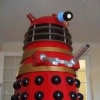


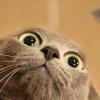

.thumb.jpg.d17ff607fc7e89ed057e63fcb6f2a888.jpg)
